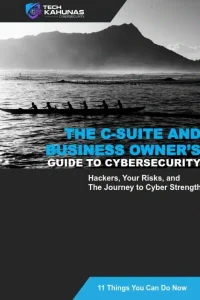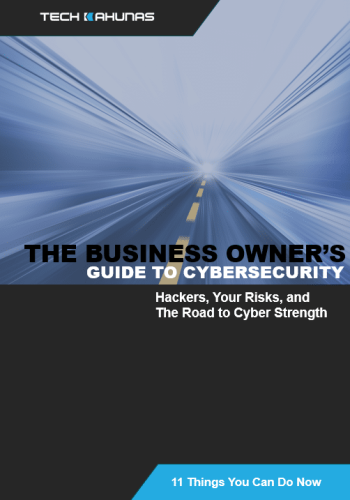Streamlining your company's tech infrastructure with IT Service Management (ITSM) enhances efficiency by aligning IT services with your business objectives. By embracing frameworks like ITIL, you can optimize processes, reduce downtime, and improve service delivery. ITSM helps identify wasteful resource use, cutting costs while maintaining quality service. Implementing an ITSM approach means evaluating your current IT practices, involving stakeholders, and choosing the right framework to follow. Training and engaging your team leads to smoother changes and problem-solving prowess. By focusing on metrics and continuous improvement, your company benefits from a modern, integrated IT strategy. Discover how ITSM transforms operations.
Key Takeaways
- ITSM aligns IT services with business goals, enhancing overall strategy and efficiency.
- Implementing ITSM reduces downtime and streamlines processes, improving service delivery.
- Choosing the right ITSM framework optimizes resource allocation and cost control.
- Regularly monitoring ITSM KPIs helps identify and address inefficiencies promptly.
- Continuous training and stakeholder engagement ensure successful ITSM adoption and adaptation.
Understanding IT Service Management
IT Service Management (ITSM) is an essential framework that helps organizations effectively deliver IT services to meet business needs. When you're diving into ITSM, you're focusing on aligning your IT services with your company's objectives. This isn't just about implementing technology; it's about strategically managing your IT services to boost efficiency and support your business goals.
In ITSM, you start by understanding the processes and practices that govern the lifecycle of your IT services. These include service strategy, design, change, operation, and continual improvement. By mastering these stages, you're ensuring that every service you provide is reliable, efficient, and valuable to your organization.
You also need to familiarize yourself with ITSM frameworks like ITIL (Information Technology Infrastructure Library), which offers a set of best practices for IT management. When you apply these practices, you're creating a structured approach to service delivery. This means you can anticipate issues before they arise and address them proactively.
Additionally, communication is key in ITSM. You're encouraged to foster collaboration between IT teams and other departments, ensuring everyone's on the same page. By doing this, you're not just managing IT services; you're transforming them into integral parts of your company's success.
Key Benefits of ITSM
Leveraging IT Service Management's full potential offers numerous advantages to your organization.
First, ITSM enhances efficiency by streamlining processes, ensuring your team can focus on strategic tasks rather than getting bogged down by mundane IT issues. You'll notice a significant improvement in productivity as ITSM reduces downtime and speeds up issue resolution.
Moreover, ITSM promotes better service delivery, ensuring your customers receive consistent and reliable support. By establishing clear processes, you minimize errors and improve customer satisfaction.
It's also a great way to align IT services with business objectives, fostering a more cohesive strategy that supports your overall goals.
Cost control is another critical benefit. With ITSM, you can identify areas where resources are being wasted and implement measures to optimize spending.
This disciplined approach helps reduce overhead without sacrificing service quality, ultimately enhancing your bottom line.
Implementing ITSM in Your Business
Implementing IT Service Management (ITSM) in your business starts with understanding your organization's unique needs and goals.
Begin by evaluating current IT processes and identifying areas needing improvement. This helps you tailor your ITSM approach to fit your company's specific requirements. Involve key stakeholders early on to guarantee alignment and gather insights that might be overlooked otherwise.
Next, choose the right ITSM framework, such as ITIL, COBIT, or ISO/IEC 20000, based on your organizational structure and objectives. These frameworks offer guidelines for managing IT services effectively.
Review your existing tools and technology to see if they align with the chosen framework and if they can support efficient service delivery.
Once you've selected a framework, design a clear implementation plan. Define roles and responsibilities, set timelines, and allocate resources to guarantee smooth execution.
Communication is vital; keep all team members informed and engaged throughout the process.
Monitor your progress regularly. Use metrics to measure the impact of ITSM on service quality and efficiency.
Be prepared to adapt your strategy based on these insights. This ongoing evaluation helps maintain alignment with your business goals and promotes continuous improvement in IT service delivery.
Best Practices for ITSM Adoption
Having laid a strong foundation for ITSM in your business, it's time to focus on best practices for adoption that guarantee lasting success. First, make sure you engage all stakeholders. ITSM adoption isn't just an IT project—it's a company-wide initiative. Involve everyone from top management to end-users to foster a culture of collaboration and transparency. This involvement helps in addressing concerns and aligning goals.
Next, focus on training. Equip your team with the right skills and knowledge to use ITSM tools effectively. Regular workshops and certifications can empower your team to handle challenges efficiently. Third, prioritize incremental implementation. It's tempting to overhaul everything at once, but gradual changes allow for smoother shifts and less resistance.
Here's a quick overview to help you stay on track:
| Best Practice | Key Focus | Outcome |
|---|---|---|
| Stakeholder Engagement | Company-wide initiative | Unified goals and transparency |
| Training Programs | Skills development | Efficient problem-solving |
| Incremental Implementation | Phased approach | Smooth shifts |
Measuring ITSM Success
Success in ITSM isn't just about deploying tools; it's about measuring their impact. To truly gauge the effectiveness of your IT Service Management, you need to focus on key performance indicators (KPIs) that align with your business goals. By doing so, you can guarantee your ITSM initiatives not only support but enhance your company's overall performance.
Start by identifying which metrics matter most. Look at aspects like incident resolution times, customer satisfaction levels, and service availability. Regularly review these metrics to identify trends and areas for improvement.
Here are some essential points to contemplate when measuring ITSM success:
- Set Clear Objectives: Define what success looks like for your organization from the start.
- Choose Relevant KPIs: Select metrics that reflect the areas you want to improve.
- Regularly Review Metrics: Consistent evaluation helps you stay on track and make informed decisions.
- Engage Stakeholders: Involve key players in the process to guarantee everyone understands the goals.
- Iterate and Improve: Use measured data to refine processes and adapt to changing needs.
Frequently Asked Questions
How Does ITSM Impact Employee Satisfaction and Productivity?
ITSM boosts employee satisfaction by resolving tech issues swiftly, letting you focus on work instead of problems. It enhances productivity by providing reliable systems, reducing downtime, and ensuring you have the tools needed to excel.
What Are the Cost Implications of Adopting ITSM?
Adopting ITSM can be like planting seeds for future savings. You'll face initial setup costs, but over time, you'll reduce inefficiencies and support expenses. Invest now, and watch as your tech infrastructure becomes more cost-effective.
How Does ITSM Integrate With Existing Cybersecurity Measures?
You'll find ITSM can enhance your cybersecurity by aligning processes, improving incident response, and ensuring compliance. It integrates smoothly with existing measures, reinforcing your defenses while maintaining efficient tech operations. Prioritize seamless integration for ideal protection.
What Role Does ITSM Play in Supporting Remote Work Environments?
ITSM supports your remote work by ensuring seamless IT operations. It centralizes service requests, manages incidents efficiently, and maintains service quality. You'll experience improved communication and faster issue resolution, enhancing productivity in a distributed work setting.
Can Small Businesses Benefit From ITSM, or Is It Only for Large Enterprises?
Small businesses can benefit from ITSM; Gartner found that 70% of small companies saw improved efficiency. You'll streamline operations, boost productivity, and enhance customer satisfaction, just like large enterprises. Don't miss the opportunity to optimize your tech infrastructure.
Conclusion
Adopting IT Service Management might seem intimidating, but it's your ticket to streamlined tech infrastructure and improved efficiency. You might worry about the initial investment, but think of ITSM as a strategic asset that reduces long-term costs and enhances productivity. By implementing best practices and measuring success, you'll transform challenges into opportunities for growth. Don't let hesitation hold you back; embrace ITSM and watch your business thrive in today's fast-paced digital landscape.



 Get your CPA firm aquainted with new FTC rules.
Get your CPA firm aquainted with new FTC rules. 




